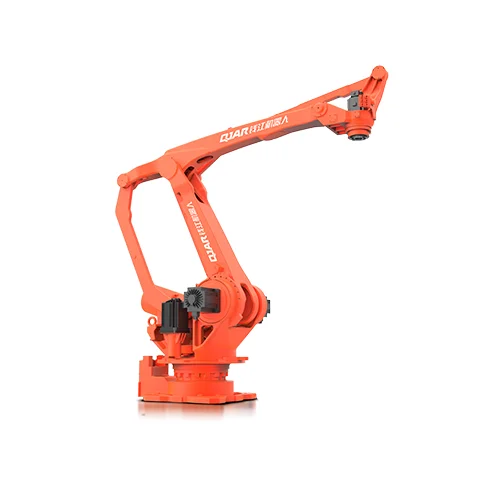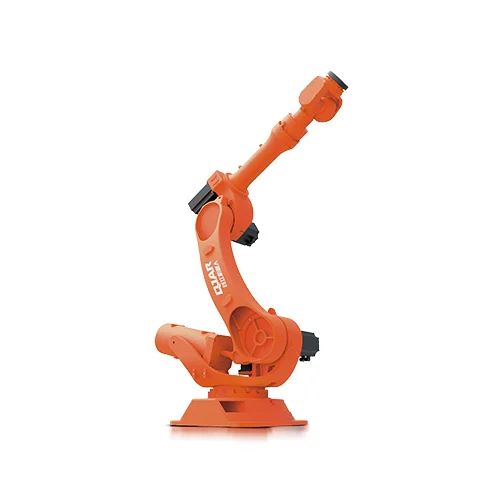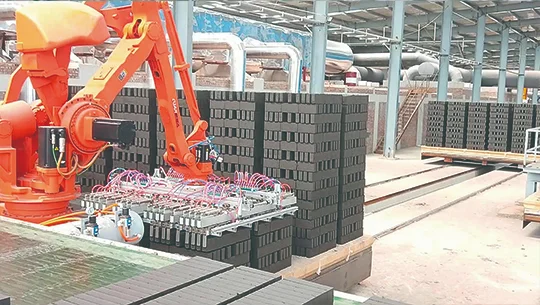Introduction
The manufacturing industry has experienced unprecedented levels of productivity, accuracy, and efficiency as a result of robotics’ revolutionary effects. This revolution is centered on assembly robots and palletizing robots, two technologies that have fundamentally altered the way in which manufacturing processes are carried out. This article explores the compatibility and reciprocal advantages of palletizing technology and assembly robots, emphasizing the manner in which their interdependent nature will influence the trajectory of intelligent manufacturing in the coming years.
A Knowledge of Robotic Assembly
Assemblies of finished products from their constituent parts are automated through the utilization of assembly robots, which are specialized robotic systems. The robots’ ability to perform complex assembly tasks with exceptional accuracy is facilitated by their sophisticated software, precise actuators, and cutting-edge sensors.
Phenomena and Principal Benefits of Assembly Robots
Elevated precision and accuracy constitute a fundamental benefit of assembly robots. By performing tasks precisely as programmed, these robots increase the quality of the final product and decrease the margin for error. Extremely minor inconsistencies can result in substantial complications, which renders this level of accuracy especially critical in sectors including electronics, automotive, and aerospace.
Complex tasks that are consistently impossible or difficult for human laborers to execute can also be managed by assembly robots. In the electronics industry, for instance, robots are capable of far surpassing human capabilities when it comes to the assembly of minute components. Enhanced production efficiency is a supplementary benefit of this capability.
In addition, increased production efficiency results from the implementation of assembly robots. A steady production rate is ensured by the fatigue-resistant capability of robots to operate continuously. They are also capable of being programmed to rapidly switch between tasks, providing the necessary adaptability for the dynamic manufacturing environments of today. Manufacturers that wish to maintain competitiveness and address market demands must possess this adaptability.
Palletizing Robots: An Investigation
In contrast, the stacking and arrangement of products onto pallets in preparation for transportation or storage is the function of palletizing robots. By facilitating the safe and efficient handling of products, these robots are indispensable to the supply chain and logistics operations.
Principal Positive Aspects and Functions of Palletizing Robots
Rapidity and consistency are two of the most notable benefits exhibited by palletizing robots. Pertaining to the stability and security of the load, these robots are capable of swiftly and precisely loading and unloading products onto pallets. Delays in palletizing can impede the entirety of the production process, making this velocity critical in high-volume manufacturing settings.
Furthermore, their ability to convey substantial loads renders palletizing robots well-suited for sectors that handle sizable or weighty merchandise. By minimizing the risk of workplace injuries and alleviating the physical strain on personnel, this capability is achieved. In addition, they ensure that products are prepared for transport in a timely and effective manner by streamlining packaging and logistics procedures called palletizing robots.
QJRB180-1 Robotic Arm, 3153mm Reaching Distance, 180kg Payload Featured Product Highlight
An illustration of the progress made in palletizing technology is the QJRB180-1 robotic arm. With the assistance of specialized palletizing software, this stable, high-velocity robotic arm operates with minimal power output. The following are noteworthy technical specifications:
Axis Number: 4; Model: QJRB180-1
180 kg payload
(0.5mm) Repeat Positioning
Vertical Length: 3153.7mm
J1: -170oC; J2: +95oC; -47oC; motion range:
J3: +112º, -20º
J4: ±360º
Velocity Max:
J1: 129º/s J2: 132º/s
J3: 132º/s J4: 298º/s
Prominent intelligent manufacturing sectors that employ this robotic arm extensively include furniture, food and beverage, and 3C (computer, communication, and consumer electronics). The organization excels in tasks that demand precision and velocity, such as palletizing, picking, packaging, handling, feeding, and unloading. The dependable performance of this device in a wide range of applications is attributed to its repeat positioning accuracy of ±0.5mm.

QJR210-1 Robotic Arm, 2688mm Reaching Distance, 210kg Payload
The robotic arm QJR210-1 is an additional noteworthy product within the domain of assembly and palletizing robots. Owing to its exceptionally compact construction and wide-ranging work area, this robotic arm is highly suitable for a variety of applications, including assembly, welding, palletizing, loading and unloading, management, and polishing
Precautionary Particulars:
Axis Number: 6; Model: QJR210-1
210 kg payload
Iterate the placement by ±0.2mm
Infinite Armspan: 2688mm
Range of Motion:
J1: ±165º J2: +85º, -50º
J3: +75º, -160º
J4: ±360º J5: ±120º J6: ±360º
Velocity Max:
J1: 100º/s; J2: 80º/s; J3: 95º/s; J4: 130º/s; J5: 120º/s; and J6: 200º/s.
Operating with exceptional precision, the QJR210-1 is equipped with a high repeat positioning accuracy of ±0.2mm. Versatile in application to a range of manufacturing processes, its large armspan and high payload capacity render it well-suited for the handling of sizable or weighty objects.

The Interdependence of Palletizing Technology and Assembly Robots
The integration of assembly robots and palletizing robots has facilitated substantial advancements in manufacturing technology. By forming a unified system, these robots augment the overall efficiency of the manufacturing process.
Palletizing and Assembly Robots’ Complementary Functions
With the ability to assemble components, assembly robots are proficient at performing precise, repetitive tasks. They maintain high quality and consistency standards by ensuring that each component is assembled accurately. Palletizing robots take over after the assembly process is complete and efficiently arrange the finished goods onto pallets for storage or shipment. The uninterrupted and streamlined process that results from this seamless transition from assembly to palletizing reduces downtime and maximizes output.
Advantages of Robotic System Integration
By integrating assembly robots and palletizing robots, production speed and efficiency are increased significantly. While palletizing robots are responsible for packaging and logistics, assembly robots can labor ceaselessly assemble products. Manufacturing is able to maximize output and meet strict deadlines without sacrificing quality through the use of this division of labor.
Significant advantages of this integration include enhanced precision and diminished errors. While palletizing robots handle the products with care to prevent damage during transport, assembly robots ensure that each item is assembled to exact specifications. Increased customer satisfaction and decreased returns result from this level of accuracy, which mitigates the likelihood of errors and defects.
Furthermore, the flexibility and adaptability of integrated robotic systems are significantly improved. Rapid response to fluctuating market demands is possible due to the fact that manufacturers can reprogram the robots to switch between various product lines or tasks. Industry sectors characterized by frequent innovation and brief product lifecycles require this degree of adaptability.

Effective Integration Illustrated Through Case Studies
Let’s look at some real-world examples to demonstrate the advantages of integrating assembly and palletizing robots.
Food and Beverage Industry — Company A
To enhance operational efficiency within the food and beverage sector, Company A integrated assembly robots and palletizing robots into a unified system. By enclosing food items in containers, assembly robots ensured quality and portion control. Once the packaged goods were arranged on pallets, they were prepared for distribution by palletizing robots. Production efficiency increased by 30% and product defects decreased significantly as a result of this integration.

3C Sector Company B
Organization B, which functioned within the 3C industry, constructed complex electronic components with exceptional accuracy by utilizing assembly robots. Following that, the palletizing robots meticulously loaded the assembled components onto pallets in preparation for transport and storage. In addition to a 25% increase in overall production speed, this system reduced assembly errors by 40%.
Manufacturing Procedure for Furniture at Company C
Company C implemented assembly and palletizing robots in the furniture manufacturing sector to manage the distribution of substantial and weighty components. Furniture components were assembled utilizing assembly robots, whereas the management of finished products was entrusted to palletizing robots. Furthermore, the implementation of this integration not only improved overall work environment safety and productivity but also decreased the physical burden on employees.
In summary
The manufacturing industry is being revolutionized by the symbiotic relationship between palletizing robots and assembly robots. These robots equip manufacturers with the means to remain competitive in a market that is undergoing rapid change by augmenting production efficiency, precision, and adaptability through collaborative efforts. From enhanced product quality to increased productivity, the case studies highlighted in this article illustrate the concrete advantages of integrating these technologies.
Undoubtedly, the trajectory of intelligent manufacturing will be profoundly influenced by the ongoing progression and integration of assembly robots and palletizing technology in the years to come. Manufacturers can establish a more streamlined, accurate, and flexible manufacturing environment by adopting these innovations; this, in turn, will propel the sector into a novel epoch characterized by technological prowess.
